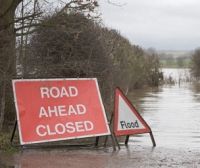

Hundreds of trees have been planted as part of the first project to trial natural flood management techniques to help improve protection for the people of Leeds living near the River Aire.
The pilot site on a working farm at Eshton Beck now has 650 new trees planted by staff and trainees from Yorkshire Wildlife Trust and volunteers.
Yorkshire Wildlife Trust also worked on three further pilots on the same site, with the help of volunteers from the area.
The flood alleviation work involved:
The aim is to see how natural techniques can slow the flow of water and reduce the risk of flooding downstream. The trees include dogwood, guelder rose, downy birch, alder and willow which will be planted along with hedgerows of hawthorn, blackthorn and hazel. It will form part of the Leeds Flood Alleviation Scheme, led by Leeds City Council in partnership with the Environment Agency, which has a catchment wide approach to flood risk as it enters its second stage.
The £500,000 pilot programme, funded by Leeds City Council, uses natural methods to slow the flow of water from upstream in the catchment. This includes land management to reduce water run-off, woodland creation to increase tree canopy cover, and river and floor plain restoration so that the landscape can hold more water in times of flood.
These pilot sites will allow the team to monitor and research the techniques used to gather evidence and increase their understanding of the benefits they provide for reducing flood risk. The pilot programme will also be used by the Environment Agency and Leeds City Council to develop a co-design approach to working with landowners, tenants, local authorities and other key partners such as the Aire Rivers Trust and the White Rose Forest. This will help to develop future plans for the catchment.
Working with natural processes to reduce flood risk, known as natural flood management, is an important part of managing and reducing flood risk in a sustainable way alongside more traditional engineering solutions. The interventions will also create habitat for wildlife and help regenerate rural and urban areas through tourism.
The second phase of Leeds Flood Alleviation Scheme has a strong focus on natural flood management, with proposals to create new woodland areas which would more than double canopy coverage in the River Aire catchment. It focuses on protecting the Kirkstall corridor, which was badly hit by the 2015 Christmas flood, and areas beyond the city boundary to further reduce the possibility of the river flooding in Leeds.
Chris Milburn, Project Executive at the Environment Agency, said this work: "contributes to local flood risk reduction and wider environmental benefits, slowing the flow of water locally and to downstream communities".
Don Vine, Conservation Officer with Yorkshire Wildlife Trust added: "we have already seen some small changes along the watercourse due to our recent work and we will be monitoring all these interventions over the next few years to measure impact - not only river flow, but also water quality and wildlife".